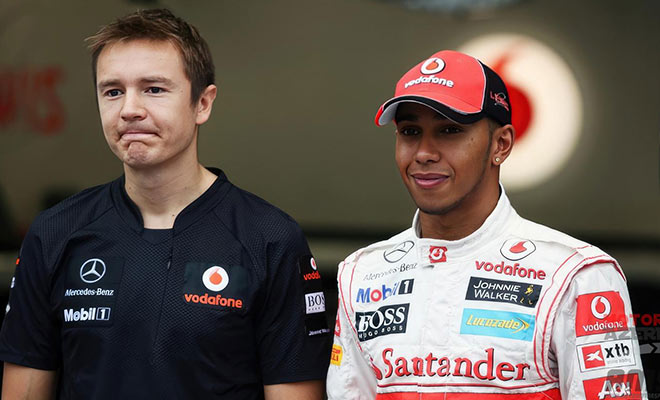Antti Vierula currently serves as Valtteri Bottas‘s physio, but he has a long history with Lewis Hamilton, having also worked with Sergio Pérez and Kevin Magnussen. He discussed how he assisted the seven-time world champion in maintaining top performance, and how a Formula 1 driver should approach training.
“You try to make the most of the time available, and that’s true for the training of any athlete,” Vierula told OLBG. “The schedule is very demanding, and the biggest challenge is fitting training into it. Training shouldn’t harm or overly stress the athlete.”
“Training also shouldn’t deplete energy levels. You learn a lot about the athletes you train by spending time with them. The trainer must tailor the training to the individual’s specifics, but that’s something you naturally learn over time.”
“Qatar is the Toughest Circuit”
Formula 1 drivers struggled in Qatar in 2023, and Vierula explains that it’s a very challenging Grand Prix to prepare for: “Some people handle it better than others. You can train during the hottest hours of the day or increase your clothing layers to replicate the heat, but hydration is the key element.”
“You need to develop a hydration plan before the race! We try not to have too much liquid in the car because it adds weight. We take in as much fluid as possible, then we have an electrolyte-filled drink ready for use during and after the race.”
“I would say that Qatar is the toughest circuit I’ve had to prepare a driver for, but that’s due to the conditions, not the track layout. It’s a very tough circuit. The heat and humidity are intense.”
“The wind calmed down a bit towards the end of the race, which further increased the humidity. The air doesn’t get into the cockpit, of course! It can get up to 55°C in the cockpit, and when you’re following another car closely, you get hot air blowing in your face. It’s horrendous.”
“The Detrimental Effect of ‘High-Speed Corners'”
He also explains that the Mexican GP is not easy: “We noticed the altitude from the first few days. It’s always the case when you go to Mexico for a sporting event! You feel a bit out of breath, and your heart rate can be a bit higher than usual.”
“Some people might experience headaches or dizziness because the altitude is 2,240 meters above sea level! You have less oxygen in your system, and you feel it a bit. However, the level stabilizes fairly quickly.”
Finally, Vierula describes the most challenging tracks for drivers and reveals the characteristics of a circuit that impose the most strain on athletes’ bodies: “I would say the most difficult tracks are those with high-speed corners.”
“There’s a lot of braking, and these types of circuits are the most demanding. I would say Suzuka is the hardest on the neck, the high-speed corners put a lot of work on the drivers.”
“The Hungaroring is also physically demanding; there aren’t many straight lines, you’re always turning somewhere. Monaco and Singapore are also tough, there are a lot of turns and not really any straight lines to rest. It requires a high level of concentration at all times.”
Training For Formula 1 Drivers: Antti Vierula’s Advice Lewis Hamilton, bottas. Training For Formula 1 Drivers: Antti Vierula’s Advice Lewis Hamilton, bottas.
- Read More>NORRIS: MCLAREN’S LONG ROAD BACK TO F1 SUMMIT
- Following us on Facebook and Twitter.
